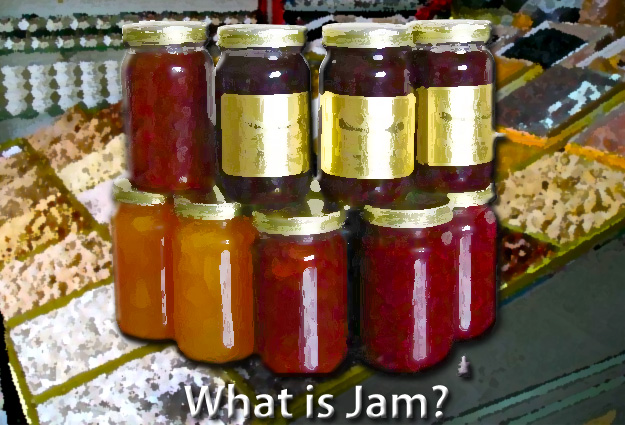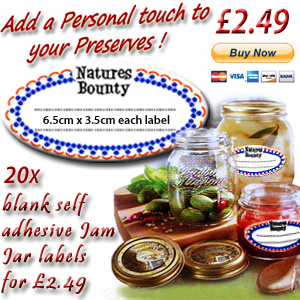 |
Knowledge Shared free for big world small world situations |
|
Just what is Jam?
 |
What is Jam and how is it made?
Well, Jam is really preserved fruits. Jams are often labelled as preserves, technically a preserve is whole or a chunked fruits, jam is a fruit pulp whilst jelly is where the fruit is in the form of the fruits juice.
(If you make your own jams you can choose the final product by using a suitable preparation and cooking method).
Good condition fruit, preferably under ripe contains in its cell walls a natural setting agent called pectin and a percentage of acid.
When you add sugar and boil the fruit the sugar concentrates causing the sugar, pectin and acid to form a mass that will reach a setting point and gel together and this is Jam.
 |
Choosing the best Fruits For Jams
The best fruit to use in jams should be dry and slightly under ripe.
The amount of water in fruit dilutes the pectin and acid content and reduces the fruits ability to gel.
Dusty fruit can be wiped with a damp paper towel and dried overnight.
Under ripe fruit contains more pectin and acid so makes a better and tastier jam. Over ripe fruit contains much less of these important ingredients and a much higher water content so it’s best to eat this fruit immediately of put it in another recipe.
Some fruits, such as citrus, blackberries, apples, redcurrants, have high pectin levels. Others are low, such as strawberries – so lemon juice is added to strawberry jam to help the set.
Not all fruits have the same amount of pectin as others but this can be made up for by adding a little lemon juice.
See Pectin level Charts for jam
Types and Quantities of Sugar needed for jams
The amount of sugar needed to make jam varies. Sharp fruits like Seville oranges and Damsons aren’t overpowered by sugar so taste much fruitier.
There is no need for preserving sugar when you make jam unless you want to use it. Preserving sugar is usually more expensive.
 |
How to make Jam and recipe Pages
What Jam making equipment do I need?
Jam making equipment need to make jam
What is Jam?
Just What is
Jam and how is it made?
How much pectin should be in jam?
Pectin levels in
fruit needed for jam making
What to do if your jam goes wrong?
Jam Making Tips and
tricks for good jams
Blackberry Jam Recipe
How to make
blackberry jam a recipe
"Jam Making Equipment you need"
Just what is Jam? Well, Jam is really preserved fruits.
Jams are often labelled as preserves, technically a preserve is whole or a
chunked fruits, jam is a fruit pulp whilst jelly is where the fruit is in the
form of the fruits juice.
(If you make your own jams you can choose the final product by using a suitable
preparation and cooking method).
